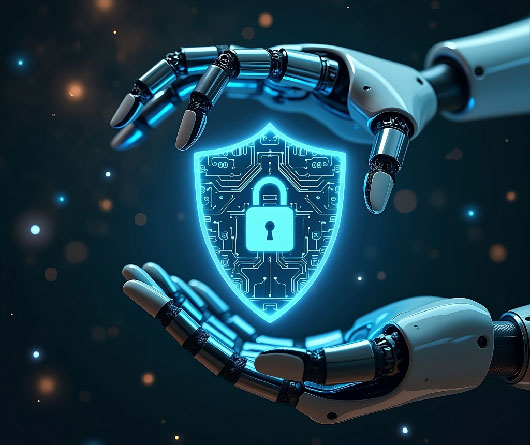Call Us:
Sales (India): +91 91488 14400
Sales (USA): +1 267 703 5359
HR: +91 80250 34302
The Human Firewall: Crucial Role of Employees in Cyber Security
- Home
- The Human Firewall: Crucial Role of Employees in Cyber Security
In the dynamic landscape of cybersecurity, where threats are becoming more sophisticated and pervasive, the role of employees in supporting a robust defence cannot be overstated. Organizations often invest heavily in advanced technologies and security protocols, but the human element stays both the first line of defence and a potential vulnerability. In this blog, we delve into the pivotal role employees play in cybersecurity, supported by factual data and real-world examples.

Understanding the Human Element in Cybersecurity
The Weakest Link or the Strongest Defence?
Employees are often considered the weakest link in cybersecurity due to potential vulnerabilities like falling for phishing attacks, weak password practices, or unintentional data breaches. However, with the right awareness, training, and engagement, employees can also be transformed into the strongest defence against cyber threats.
The Magnitude of Insider Threats
Insider threats, whether malicious or unintentional, can pose significant risks to an organization’s cybersecurity. According to the 2021 Cost of Insider Threats Global Report by Ponemon Institute, the average annual cost of insider threats for surveyed organizations was $11.45 million. This emphasizes the need for organizations to recognize and address the human factor in cybersecurity.
The Employee as the First Line of defence
Recognizing and Reporting Threats
Employees are often the first to meet potential threats. Educating them to recognize signs of phishing emails, suspicious links, or unusual system behaviour is crucial. A study by the Aberdeen Group found that organizations with security awareness training programs saw a 94% improvement in their ability to recognize and report security threats.
Password Practices and Authentication
Weak passwords and poor authentication practices stay common entry points for cybercriminals. A recent Verizon’s Data Breach Investigations Report highlighted that over 60 percent of breaches involved credential data. Employee education on creating strong passwords, using multi-factor authentication, and understanding the importance of secure login practices is essential.
Data Handling and Privacy Awareness
Employees are custodians of sensitive data, and their awareness of proper data handling practices is vital. A report by IBM Security and the Ponemon Institute revealed that 23% of data breaches were caused by human error. Organizations need to invest in training programs to instill a culture of data privacy and security among employees.
Challenges in Employee-Centric Cybersecurity
Lack of Cybersecurity Awareness
A survey conducted by Cybersecurity Insiders found that 65% of organizations believed the lack of employee cybersecurity awareness was a significant challenge. Overcoming this challenge requires a strategic approach to education and communication, emphasizing the real-world impact of individual actions on organizational security.
Balancing Security and Productivity
Striking the right balance between security measures and keeping productivity can be a challenge. Employees may resist stringent security protocols if they impede their workflow. It’s crucial for organizations to implement user-friendly security measures and communicate the importance of these measures in protecting both the organization and individual employees.
Empowering Employees Through Training
Cybersecurity Training Programs
Investing in comprehensive cybersecurity training programs is paramount. According to a study by the Information Systems Audit and Control Association (ISACA), organizations with continuous employee training programs experienced 40% fewer security breaches. These programs should cover various aspects, including recognizing phishing attempts, secure data handling, and adherence to password policies.
Simulated Phishing Exercises
Simulated phishing exercises can provide employees with firsthand experience in finding and avoiding phishing attacks. A study by Wombat Security found that organizations that conducted simulated phishing exercises experienced a 26% average reduction in susceptibility to phishing attacks.
The Role of Leadership in Promoting Cybersecurity Culture
Setting the Tone from the Top
Leadership plays a crucial role in fostering a cybersecurity-conscious culture. When leaders prioritize and actively take part in cybersecurity initiatives, employees are more likely to follow suit. A survey by EY found that organizations with active involvement from leadership in cybersecurity initiatives reported higher overall cybersecurity maturity.
Setting up Clear Policies and Guidelines
Clear and well-communicated cybersecurity policies provide employees with guidelines on secure practices. A study by PwC highlighted that organizations with well-defined cybersecurity policies were 21% more likely to have a mature cybersecurity posture.
The Business Impact of Employee-Centric Cybersecurity Practices
Reducing the Cost of Data Breaches
IBM’s 2021 Cost of a Data Breach Report revealed that organizations with a robust security awareness training program reduced the average cost of a data breach by 48%. This reduction emphasizes the fiscal impact of investing in employee-centric cybersecurity practices.
Enhancing Incident Response and Recovery
Employees trained to recognize and respond to security incidents contribute significantly to reducing incident response times. According to a study by CybSafe, organizations with cybersecurity-aware employees experienced a 70% faster resolution of incidents.
Conclusion: Building a Human-Centric Cybersecurity Strategy
In conclusion, while advanced technologies and robust security protocols are crucial components of cybersecurity, organizations must recognize and empower employees as an integral part of the defence strategy. Factual data underlines the potential risks posed by the human element but also highlights the transformative impact of well-informed, trained, and engaged employees. By investing in comprehensive training programs, fostering a cybersecurity-conscious culture, and aligning leadership with security initiatives, organizations can build a human-centric cybersecurity strategy that effectively addresses current and future threats. In the ever-evolving landscape of cyber threats, the human firewall appears as a strategic imperative, putting an end to information security woes.
Read More
Address
-
First Floor, Rathi Legacy-
Rohan Tech Park,
Seetharampalya - Hoodi Road,
Doddanakundi Industrial Area 2,
Seetharampalya, Hoodi,
Bengaluru, Karnataka – 560048













